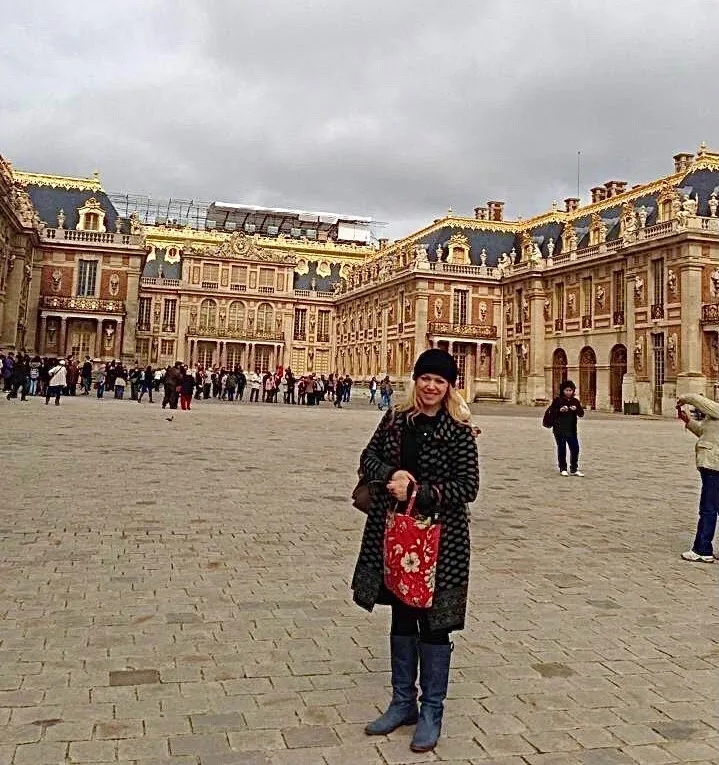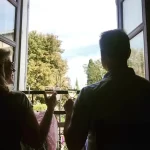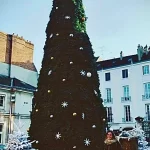Versailles is worth all the crowds and the queues... magnifique!
Loulabelle's FrancoFiles Episode 18
Other Loulabelles links:
Loulabelles FrancoFiles Instagram
Loulabelles FrancoFiles Spotify Playlist
Loulabelles FrancoFiles Facebook
For as long as I can remember, I have been in awe of the legend and the stories surrounding Versailles. It was wonderful to hear about this magical place from a French local perspective with ma belle amie Sarah Zwick who is just as big a fan as I am.
Versailles has been listed as a World Heritage Site for the past 30 years, and is arguably one of the greatest achievements in French 17th century art and architecture. What started out as a hunting pavilion for King Louis XIII, was extended and transformed by his son King Louis XIV when he installed the Royal Court and French Government there in 1682.
Learning about Versailles à l’école
Sarah explained to me how Versailles is studied at school in France, from various perspectives: the changing buildings and Italian influenced renovations during the Renaissance, the French Revolution, and the Treaty of Versailles.
Over 30,000 people worked on the renovations for Louis XIV, and he even brought in glass makers from Venice to create the Hall of Mirrors. These artisans were then executed for divulging the secrets of Venetian glass to the French!
When King Louis XVI was forced to leave Versailles in 1789 due to the revolution, it was never again to be a royal residence. How lucky we are that it was not damaged by that tumultuous time and is now today a wonderful museum for all to enjoy!
I asked Sarah why it is often referred to as the Château de Versailles which seems to understate the elegance of the building somewhat! It is definitely a palace! Why is it referred to in this way? Apparently back during the Renaissance, the term château referred to a luxurious residence in a rural location, as opposed to in the city, such as the Louvre Palais in the heart of Paris. Perhaps it is now that Versailles is on the outskirts of the city of Paris, or because it is almost a city in its own right, that it is now often referred to also as the Palais de Versailles.
It is fascinating to think of the more recent history of Versailles as well when meandering around the palace. The Treaty of Versailles was signed there in 1919 to formally end WW1.
The Sun King
The rooms through the main palace have an opulence that I was not prepared for at all on my first visit. They actually took my breath away at times. The Hall of Mirrors is quite amazing, but I was more fascinated with the rooms leading to and adjoining the famous Galerie des Glaces. These spaces highlighted some peculiar royal customs I was unaware of before I went there. One such practice was how the members of the Royal Court would sit and watch the King and Queen eat, in separate chambers some of the time. They would also clamber to be chosen to attend the waking of the King each morning. Louis XVI considered himself the “Sun King” modelled on Apollo the Greek god of sun and light. Louis thought it would be a privilege for his courtiers to watch the sun come up, in other words, watch him get up!
The layers of complexity of the royal and social hierarchy was crazy! It those times it was a whole city of its own, and then outside the walls, people were starving, whilst watching the royals and their court as the celebrities of their time living the high life. As I walked through those rooms, I started to understand how the rumbles of revolution could have begun.
Les Trianons
My favourite part of Versailles is actually quite separate from the palace, down the back of the huge jardins in the Grand Trianon and Petite Trianon, the summer houses for the King and Queen. Separate summer houses of course, as it would not have been appropriate for the King’s mistress and the Queen to have a face off at the petit déjeuner table!
Near the Petit Trianon, the Queen’s summer house, there is a little replica English village that was built for Marie Antoinette. It’s called the Hameau de la Reine, or the Queen’s Hamlet and in its day contained a meadow, lakes and streams as well as a classical temple of love and a grotto which were all the rage in well-to-do England in 1783 when it was built. There was also a mill wheel which was turned by the stream and a farmhouse as part of the working farm which supplied produce for the Queen’s Petit Trianon. It was her little fantasy place and was an extravagance that I wonder if the French public thought one step too far, adding fuel to the fire that resulted in her eventual seat at the guillotine.
Tips for a Versailles visit
Below are a few tips for FrancoFilers to assist with getting to Versailles and making the experience as stress free as possible.
- Be prepared for massive crowds. There is no avoiding that. But the crowds are a little less mid-week than on the weekends.
- Versailles takes a full day, so I recommend starting your day early and getting there before 9am when the queueing will have commenced but not be outrageously huge yet!
- It will be necessary to catch the RER train, the yellow C line that passes through St Michel in Paris and runs along the Seine, above ground. It will take to you to the Versailles Rive Gauche station in downtown Versailles and the palace is a short well sign-posted 5 to 10 minute walk from there. Some tourists prefer to book a tour bus, but we found the train to be just lovely, with some trains even decorated inside to resemble the Hall of Mirrors. We also had buskers on the train which added another festive layer to our day out there.
- For tourists who buy a Paris Pass, which I highly recommend, your daily Metro ticket will get you all the way to Versailles, but it is important to note that you will need to buy a ticket just for the outer Paris zone to get back through the Versailles train station platform gates for your return trip to Paris.
- When arriving at the Palace, it is necessary to go to the ticket office first and queue to buy your ticket, then return to the queue for entry to the actual palace. It’s a complicated system with layers of queuing required, so maybe put one of your group if you’re not alone into the queue for the palace while you go and grab tickets from the booking office! Even if you have a Paris Pass which includes entry to Versailles, you will need to head to the booking office first to redeem and get your entry tickets and this is the one attraction for which a Paris Pass does not remove the need to queue.
- Make sure you get the recorded commentary that everyone wears on a lanyard around their necks to hear all the history and gorgeous features in detail of each part of the palace. It not only gives a terrific perspective of the whole place, but helps to block out the noise of the tourist throng around you too.
- The actual property of the Chateau of Versailles is vast so once out of the palace it is best traversed by the Petit Train that transports tourists through the divinely gorgeous jardins. An extra ticket is required for this too! The Petit Train travels to the Grand Trianon and Petit Trianon. As I said earlier, these 2 summer houses are actually my favourite part of the whole Versailles experience and in my opinion not to be missed. There is a lovely restaurant with an outside dining space at the Petit Trianon, so factor that into the planning of the timing for your lunch!
- The gift shops at Versailles have some sweet little trinkets similar to all the gift shops at the museums and galleries in Paris, but the Grand Trianon gift shop has some extra gorgeous items not found anywhere else. I have headed back there specifically for the crockery available in this boutique! I use my purchases every day and it’s a gentle reminder of a wonderful visit to an exquisite place and a beautiful life memory.
Musique
Thylacine – captured sound heritage of Versailles
This piece is Versailles restyled, by a modern French composer William Rezé otherwise known as Thylacine. The current team at Versailles wanted to enable the public to be able to immerse ourselves in the sound world of the Palace of Versailles, in the footsteps of the kings of France, but they wanted to approach this sound heritage in a modern way. So they called on one of the most interesting artists on today’s French electronic scene, Thylacine. He has released several notable albums, and with a classical background as a saxophonist, he took a turn into electronic music whilst studying at the Beaux-Arts Academy.
Listening to some of the sounds in this piece, I can almost imagine what it would have been like to reside in that beautiful place when it was quiet and hear the sounds that become so familiar to us all in the place within which we live. We hear a bell ring, a chime, the mechanism of a clock, a crystal chandelier tinkling in the breeze, the floor squeaking while a key clicks and turns in a lock. We also hear an antique harpsichord release notes of music from another time and mesh with our current world.
I absolutely loved this instrumental piece. It transported me through space and time and is well worth viewing the official video for the sneak peek at gorgeous Versailles without the crowds!
Recette
There is movie that has just come out: Ottolenghi and the Cakes of Versailles, I can’t wait to see it! So instead of sharing a recipe in this blog post as is my usual habit, I will recommend the movie which is all about Ottolenghi’s inspiration from Versailles for his cake exhibition.
Instagram posts with all the pics xx



